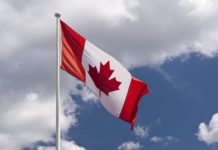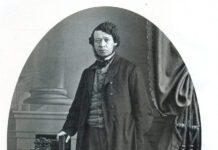There had been so many highs and lows in the story of Confederation since 1864. What with the Fenian raid, the resignation of George Brown from the Coalition and his subsequent bitter attack on his one-time colleagues, by the summer of 1866 everyone was tired, dejected and the great spirit of fun and excitement that had marked the Charlottetown and Quebec Conferences had long since faded. It had been hoped that Confederation would pass the Imperial Parliament in London by the end of the 1866 session, but the British Government fell in June, the Canadians were delayed in passing the legislation necessary to establish the new provinces of Ontario and Quebec once union was officially achieved. The delegates from New Brunswick and Nova Scotia arrived in London in July to find the Canadians still back at home. The Nova Scotians were desperate to get the job finished, as Joseph Howe and his anti-Confederation party could force an election and scupper the entire project. John A. Macdonald was no help at all, as he seems to have indulged in one of his periodical drinking binges and was in no condition to provide the leadership needed to get things done.
When, at last, the Canadians arrived in London, it was November, 1866 and the Maritime delegates had been kicking their heels in England since July. But now the final work could begin and Macdonald was back in magisterial form. This was threatened only once, in December, when he fell asleep in bed while reading and his bed and curtains caught fire. It took the help of Cartier and Galt to put out the flames, a very narrow escape for the future Prime Minister of Canada, whose shoulder was badly burned. There was still a great deal of debate and argument about various Resolutions, and it was not until after the New Year of 1867 that the British North America Act was finally ready for the Imperial Parliament.
Two interesting changes in terminology were introduced in London. Instead of the two chambers of the new Parliament being called, as they had been before, the Legislative Assembly and the Executive Council, they would be called the House of Commons and the Senate. More importantly, the new nation would be called “Canada”, and about that there was no dispute. However, the British Americans wished it to be known as the Kingdom of Canada, and here the Imperial Government objected strongly. They feared the American reaction to having a Kingdom rise on their borders, and they wanted to find a less controversial title. Some American politicians had attempted to introduce a resolution to Congress objecting to Confederation itself: a Kingdom would only make matters worse.
It was Samuel Tilley of New Brunswick, it seems, who came up with the name “Dominion”, as he read his Bible, a daily act. That particular morning, Psalm 72 was part of his reading, and in it he found: “He shall have dominion also from sea to sea, and from the river unto the ends of the earth”. This seemed to describe the new geography of Canada very well, and hence his suggestion of the Dominion of Canada as the name of the new nation. The British, including Queen Victoria, found it an acceptable, though uninspiring, title, and so it came to be.
The British North America Act received Royal assent on March 29, 1867, though the Canadians realised that their hosts were not as excited as they were. Alexander Galt, who had worked for this day since the 1850’s, wrote to his wife: Ï cannot shut my eyes to the fact that they want to get rid of us”. The London Times clearly felt that way: “We look to Confederation as the emans of saving this country [Britain] from much expense and much embarrassment”.
Nevertheless, the great project had been achieved: the Union of four of the British American Provinces had been achieved, and a new nation had been born.








